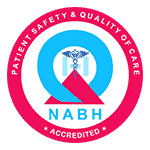Kidney disease is quietly creeping into the lives of millions around the world, and it’s not getting the attention it deserves. When we think of global health crises, our minds often jump to heart disease, cancer, or even infectious diseases like COVID-19. But kidney disease? It’s not exactly the headliner. Yet, it’s becoming a massive issue, one that’s affecting people of all ages, backgrounds, and regions. So, let’s talk about why this is happening, what it means for us, and what we can do about it. Because honestly, our kidneys deserve a little more love. Ayurvedic kidney treatment advocates the patients to identify the symptoms early so that further complications can be avoided.
Your kidneys are the unsung heroes of your body. These two bean-shaped organs, tucked away near your lower back, work tirelessly to filter waste, balance fluids, and keep your blood pressure in check. But here’s the thing: when they start to fail, they don’t make a big fuss about it. Kidney disease is often called a “silent killer” because symptoms don’t usually show up until things get really bad. By the time you notice swelling in your legs, fatigue, or trouble breathing, the damage might already be severe.
Globally, chronic kidney disease (CKD) affects about 10% of the population, that’s roughly 850 million people, according to the International Society of Nephrology. And those numbers are climbing. What’s driving this? A mix of lifestyle changes, aging populations, and a rise in conditions like diabetes and hypertension, which are basically the perfect storm for kidney trouble.
The stats are staggering, but the real story is in the people. Imagine a 45-year-old dad in Brazil who’s been managing diabetes for years, only to find out his kidneys are failing. He’s now facing dialysis three times a week—hours hooked up to a machine just to stay alive. Or a young woman in the U.S. who didn’t realize her high blood pressure was a problem until she ended up in the ER with kidney failure. These aren’t rare cases; they’re becoming the norm.
And then there’s the economic side. Treating kidney disease is expensive. Dialysis costs tens of thousands of dollars a year, and kidney transplants? Even pricier, plus you need a donor and lifelong meds to keep your body from rejecting the new organ. In low-income countries, this kind of care is often out of reach, leaving people to suffer or worse.
Our modern world isn’t doing our kidneys any favors. Processed foods loaded with salt and sugar are everywhere, and they’re wreaking havoc on our systems. Sedentary lifestyles (think desk jobs and Netflix marathons) aren’t helping either. Add in stress (hello, 21st-century life) and environmental factors like air pollution or contaminated water, and you’ve got a recipe for trouble.
Aging populations are another piece of the puzzle. As people live longer, their kidneys have more time to wear out. In countries like Japan or Italy, where the elderly make up a big chunk of the population, kidney disease rates are climbing fast.
And let’s not forget access to care. In wealthier nations, early detection and treatment can slow kidney disease down. But in poorer regions, people might not even know they’re at risk until it’s too late. Awareness is low, and screening isn’t routine. It’s a gap that’s costing lives.
Here’s the good news: a lot of kidney disease is preventable. It starts with the basics; eating better, moving more, and keeping an eye on things like blood sugar and blood pressure. Cutting back on salt, drinking more water, and ditching smoking can go a long way. It’s not rocket science, but it does take effort.
Governments and health organizations have a role too. Public health campaigns can raise awareness (think ads or community programs that encourage people to get their kidneys checked). Affordable screening, especially in high-risk areas, could catch problems early. And tackling the root causes, like clean water access or reducing diabetes rates, would make a huge dent.
For those already living with kidney disease, innovation is key. Researchers are working on better dialysis options, artificial kidneys, and even ways to regenerate damaged tissue. It’s not a cure yet, but it’s hope.
I’ll be real with you: writing this made me think about my own habits. Am I drinking enough water? Could I cut back on the late-night chips? Maybe it’s time for a check-up. Our kidneys don’t ask for much, but they do so much for us. Ignoring them feels like taking a loyal friend for granted.
So, let’s talk about it more. Share this with someone you care about. Ask your doctor about your kidney health next time you’re in. Small steps can add up, and if we all pitch in, maybe we can slow this global rise. Because 850 million people affected is a big number—but it doesn’t have to keep growing. Kidney disease might be silent, but we don’t have to be. Let’s give it the attention it deserves, before it’s too late.
Karma Ayurveda Hospital is a renowned center offering potent natural treatment for renal disorders.
Yes, Karma Ayurveda uses 100% natural herbs and holistic methods, making the treatment safe.
"Ayurveda is not just a system of medicine; it's a way of life. Connect with us to embrace a lifestyle that nurtures your body, mind, and soul."

Certificate no- AH-2023-0186
JAN 05,2023-JAN 04,2026